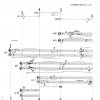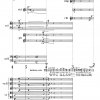Heart of the Night
Heart of the Night for baritone and orchestra (1956)
{slider=Serce nocy [Heart of the Night], song cycle for baritone and piano. Noc /fragment/}
Jerzy Artysz - baryton, Szábolcs Esztényi - piano, Warsaw 2004
{/slider}
{slider=Serce nocy [Heart of the Night], song cycle for baritone and piano. Epistoła dla zakochanych /fragment/}
Jerzy Artysz - baryton, Szábolcs Esztényi - piano, Warsaw 2004
{/slider}
{slider=Serce nocy [Heart of the Night], song cycle for baritone and piano.Spotkanie z matką /fragment/}
Jerzy Artysz - baryton, Szábolcs Esztényi - piano, Warsaw 2004
{/slider}
{slider=Serce nocy [Heart of the Night], song cycle for baritone and piano. Sanie /fragment/}
Jerzy Artysz - baryton, Szábolcs Esztényi - piano, Warsaw 2004
{/slider}
{slider=Serce nocy [Heart of the Night], song cycle for baritone and piano. Serce nocy /fragment/ }
Jerzy Artysz - baryton, Szábolcs Esztényi - piano, Warsaw 2004
{/slider}
The poetic virtues of Konstanty Ildefons Gałczyński’s poems found worthy support in Serocki’s music. At that time the composer was greatly fascinated with dodecaphony and pointillism, and used this convention for his own purposes. Arranging the pitches according to twelve-note series (for each song there is a different series – interval pattern), he emphasised the sensualist, sonic qualities of pointillism to pursue poetic expression as strictly as possible.
The work engages with its “neo-impressionist” colours and its mood, resembling – as Tadeusz A Zieliński notes – “the poetics of early Boulez” and combined with “Webernian discretion and economy of means”. These qualities can best be seen in the version for orchestra, in which the composer used many “sonorous” percussion instruments as well as delicate-sounding mandolins, guitars and harps.
The first song in the cycle is Night, dedicated to Tadeusz Baird and introducing the listeners to the mood of the night, full of concentration and mystery. The second song – dedicated to Alina and Jan Krenz – is entitled An Epistle for Lovers. Its mood is somewhat playful:
Now the whole great world belongs to you,
by triple moons, my friends, to you I swear this.
The third song, Meeting Mother, is dedicated to the composer’s mother and is the most lyrical part of the whole cycle. The following Sleigh, dedicated to Urszula and Czesław Lewicki, brings back, in accordance with the principle of contrast, a cheerful, though also very suggestive, mood, of a sleigh ride:
Sleighs are gliding, on the roads move shadows:
with a long slanting shaft and a fur cap.
Willows frighten. Snow sparkles. And bellmanlike,
the horse rings the chimes on the bells here.
Finally, song number five, dedicated to “My Wife”, returns to the initial poetics of the night: the sun appears in the sky and its “illumined mechanism” nudges “every circle, plane and every solid” and changes the perception of reality. It is also a very personal and moving confession. It is to be achieved through indications for the performer changing with each phrase: quasi narrando – "When I go, then, dear one, do not sorrow”; più cantato – "as the moon I'll come back to your window”; dolce e cantabile –"When the white light shimmers on the pane there”; quasi recitativo – "know, 'tis I”; parlando – “your moonbeam”; and finally sussurato – "heart of the night".
{slider=Sources:}
- Tadeusz A. Zieliński, O twórczości Kazimierza Serockiego [On Kazimierz Serocki’s Oeuvre], Kraków 1985.
{/slider}







